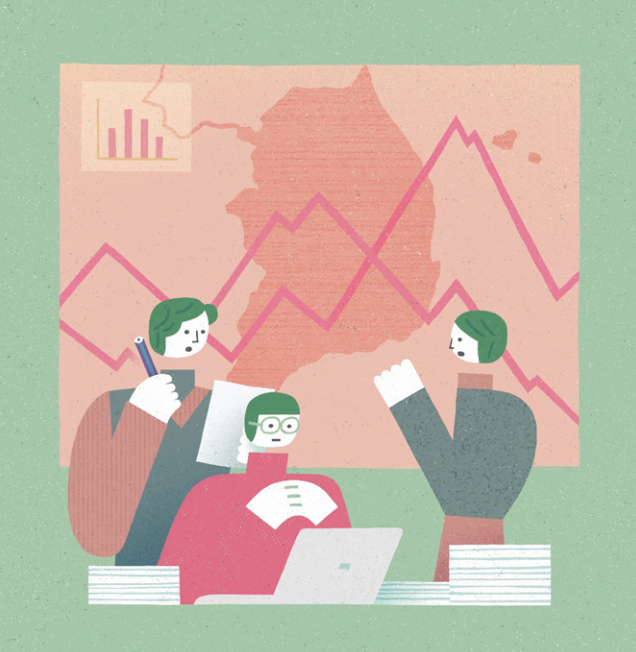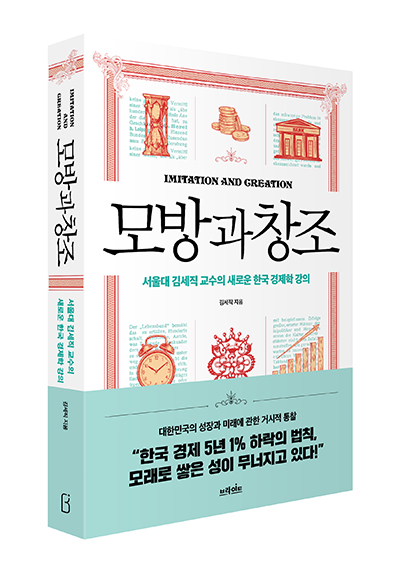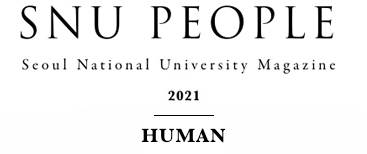Research
Note I
The Key to Preventing the Thirty Years
of Decline in Growth
Imitation and Creation

In the spring of 1990, as a graduate student at the University of Chicago, I was making a presentation of an economic growth model for the rapid growth of the Korean economy. By the end of the seminar, one of the professors asked me a question. "How long do you think the rapid growth of the Korean economy will continue?" This question, which can only be answered at least three decades later, was engraved in my mind and became my lifelong research question. I have continued to track the growth path of the Korean economy to find an answer to this question.
Se-jik Kim, Professor, Department of Economics, College of Social Sciences

Imitation and Creation is a book written to inform the readers of the most important principles of the Korean economy that I discovered in my search of the growth path of the Korean economy for over thirty years. One of the principles that drove our economy in the past thirty years is "the 1% drop in every five years." Following this principle, the long-term growth rate of Korea, which represents the economy's growth capacity, has recurrently dropped by 1 percentage point every five years. Despite this trend, the former administrations have repeatedly introduced short-term economic stimulus without a fundamental policy to put an end to this fall. As a result, South Korea has been experiencing a thirty-year decline in economic growth since the 1960s, which was when we experienced rapid growth of more than 8% a year.
The most significant cause behind this thirty-year decline in growth is the failure to accumulate human capital. As the accumulation of human capital, which served as the main engine for growth, stalled, Korea mainly relied on physical capital, which eventually led to the decline in both human and physical capital and Korea's growth rate.
Investing in "creative human capital" is needed to overcome this problem. Whereas imitative human capital is accumulated by imitating existing knowledge and technology, creative human capital is the ability to envision and create new knowledge and technology or could also refer to the human capital accumulated through such an ability. It was easy to amass imitative human capital in the past because of the common belief that you could copy someone else's work and the existence of technologies that were available for free. However, the value of imitative human capital drastically dropped after the 1990s, and Korea, which failed to accumulate creative human capital, was unable to turn on the engine for sustainable growth. To overcome this situation, we need to transition into a creative capitalist economic system.
The creative capitalist economic system guarantees the property rights and incentives of the imitative human capital and the creative human capital. Moreover, the system is equipped with an education system that helps its citizens effectively improve their creative human capital, which would enable them to come up with creative ideas. The creative ideas incubated within the system will soon be transformed into company products, thereby creating high-quality job opportunities.
The key to opening the new world of creative capitalism is protecting the property rights of ideas. It is not late for the government to certify all types of innovative ideas and guarantee the property rights and ownership of the creators. Moreover, the government should implement a "national idea registration program," which would allow an idea that was confirmed to be new and unprecedented to be registered electronically and be named after the creator. Ideas should be protected, even if they are about "what" to make, and do not include details on "how" to make it. A system that can prevent idea thefts should also be established as soon as possible.
Students with humanities or social sciences backgrounds should also be encouraged to make creative inventions. Government officials have dominated policy ideas, and innovative policy ideas have been relatively difficult to find. If students with humanities or social sciences backgrounds could also share ideas on government policy, the scope of policy ideas, which has long been considered the duty of select government officials, will be expanded. The national idea registration system would also be helpful in this process.
In the end, the answer to the question my professor at the University of Chicago asked me thirty years ago depends on what choices Korea made. Even now, if Korea chooses to transition into a creative capitalist country, the number of ideas created from Korea will grow at an even faster pace than the United States, which has been at the helm of global technological progress. Then perhaps Korea would be able to regain its rapid growth rate and maintain it for a long time. The solution to prevent the thirty-year decline in growth is to overturn both perceptions and the system so that we can go beyond the "age of imitation" and welcome the "age of creation."

